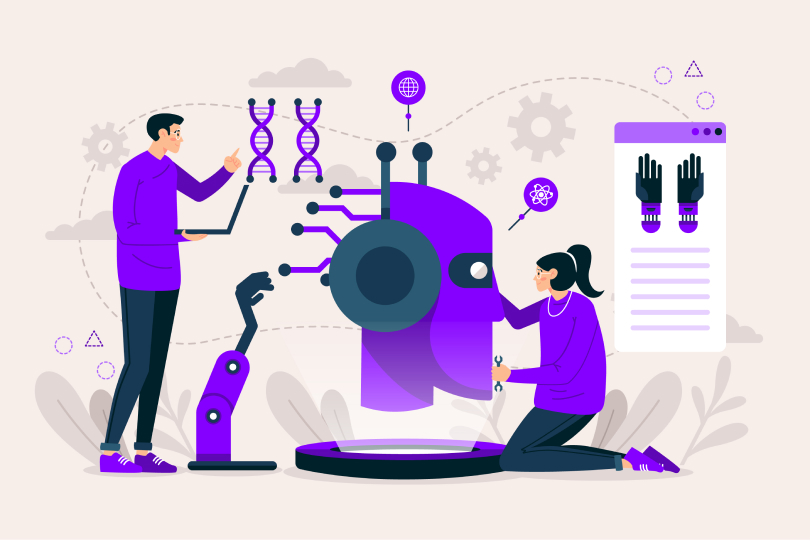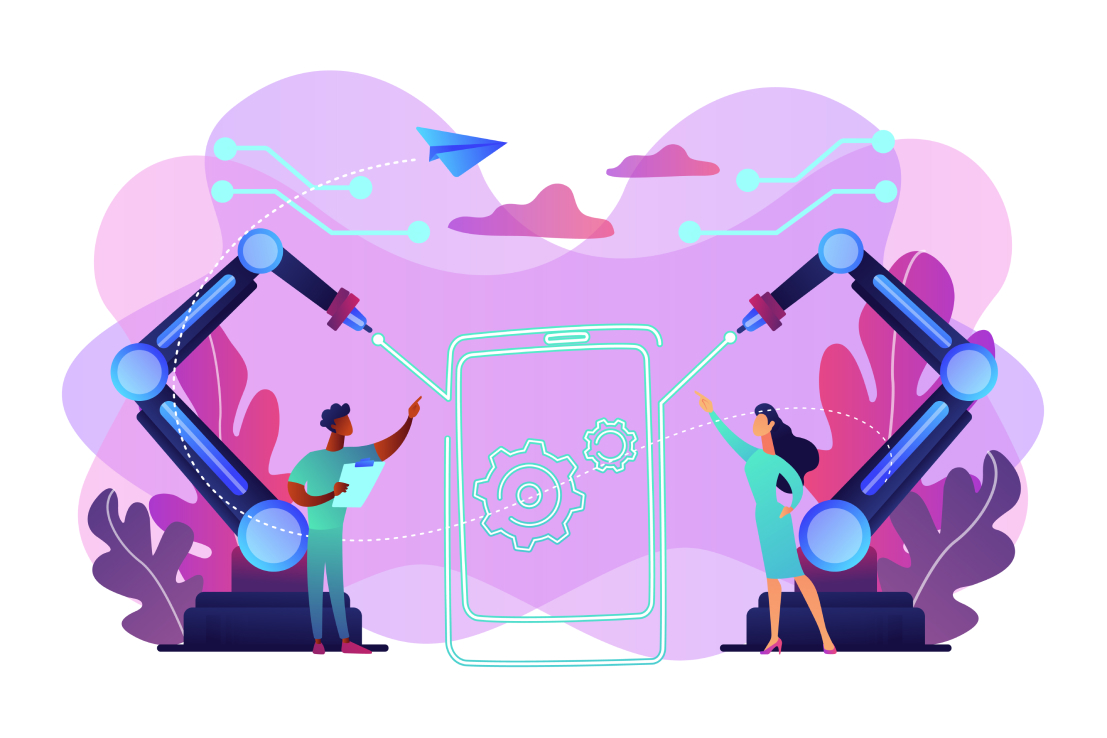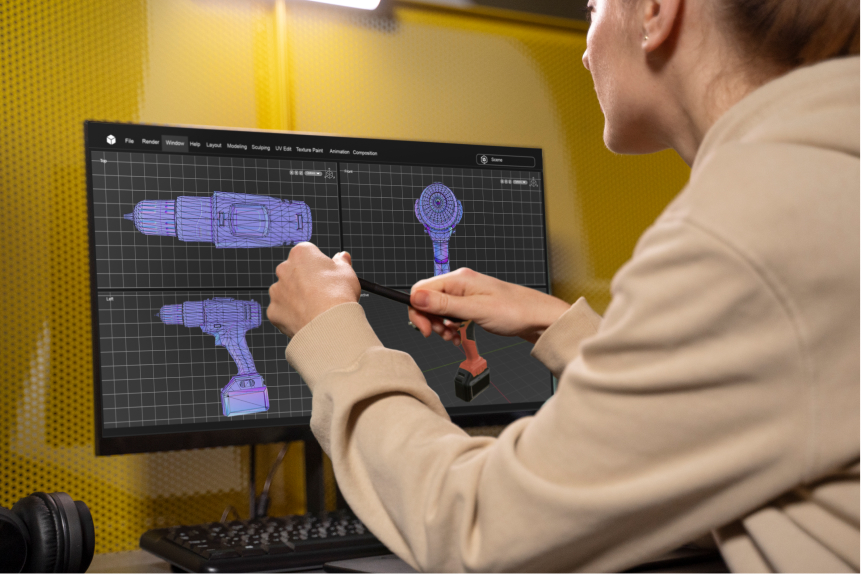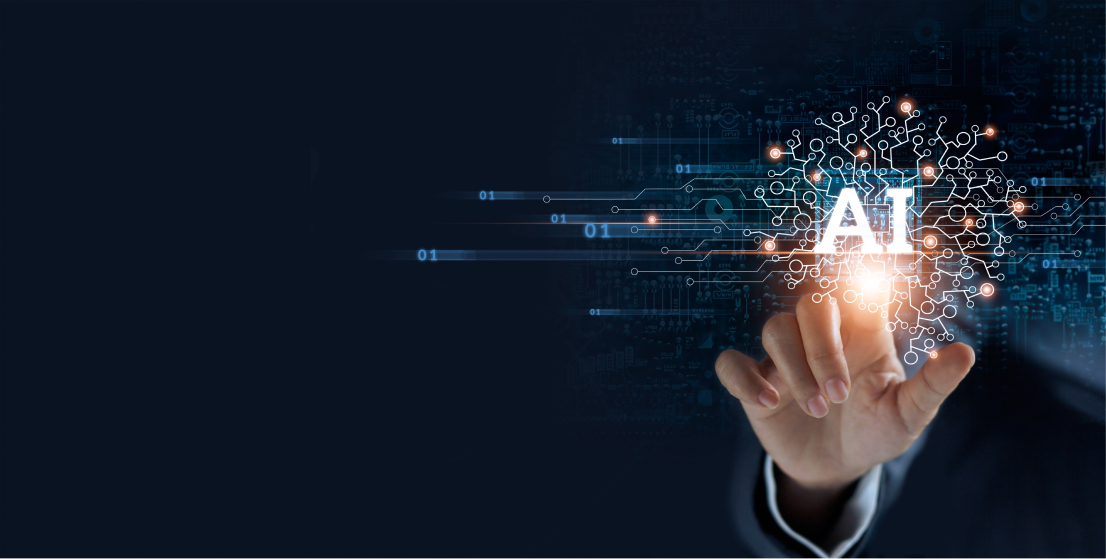
Unleashing Potential: The Impact of AI on Prototyping
As a process to bring ideas to life, prototyping has been a cornerstone in the design and manufacturing industries. But, ever wondered how the prototyping basics have evolved over the years? Meanwhile, artificial intelligence (AI) has swiftly permeated various sectors, transforming processes and systems. So, what happens when AI steps into the arena of prototyping? That's what we're about to find out! Buckle up as we navigate the transformative journey of AI in prototyping and explore its potential to reshape our future.
The Evolution of Prototyping
If we trace the history of prototyping, the journey takes us back to a time when creating models was a manual and often laborious task. Traditional prototyping was a time-consuming affair, often requiring significant effort to iterate and perfect. Despite its limitations, this was the process inventors, designers, and engineers used to bring their ideas to life.
The emergence of AI in prototyping marks a significant milestone in this evolutionary timeline. By applying the principles of machine learning and data analysis, AI brings a level of dynamism and flexibility to prototyping. With the ability to create, test, and refine models within a digital environment, AI prototyping is revolutionizing the way we conceptualize and realize designs.
A comparison between traditional prototyping and AI prototyping reveals significant differences. While the traditional approach may offer the possibility of visualising the creation of a model, it is inferior in terms of efficiency, accuracy and versatility. AI prototyping, on the other hand, is more dynamic, allowing for instant changes, accurate results, and numerous iterations, all with less time and money.

The Intersection of AI and Prototyping
What does AI prototyping entail? Simply put, it is the use of AI technologies to facilitate the design and creation of prototypes. From software applications that can create 2D and 3D digital models, to AI-powered 3D printers that can materialize intricate designs, the scope of AI prototyping is vast and still expanding.
The AI prototype design process is both iterative and dynamic. It starts with conceptualizing a design, followed by creating a prototype using AI tools. The prototype is then tested and refined based on feedback, with AI algorithms learning from each iteration. The result is a more efficient and accurate design process that continuously improves over time.
AI's potential as a problem-solving tool is immense. It has a unique capability to handle and process complex data, providing innovative solutions to intricate design challenges. By learning from each interaction and drawing from vast datasets, AI can predict outcomes, optimize designs, and implement changes in real-time, thereby transforming the prototyping process.
Key Features of AI in Prototyping
AI's impact on prototyping is multi-dimensional. One of the major advantages it offers is speed. By automating and optimizing the design process, AI enables quick turnarounds, allowing ideas to be visualized and realized more rapidly. This acceleration is a boon for businesses, reducing time-to-market and increasing agility.
Precision and accuracy are the hallmarks of AI prototyping. The application of machine learning and advanced analytics ensures that the prototypes developed are error-free and as close to the intended design as possible. This level of precision is invaluable in industries where even minor errors can have significant consequences, such as aerospace and biomedical engineering.
AI is not just about efficiency and accuracy; it's also about creativity and innovation. By incorporating AI in the design process, businesses can experiment with novel ideas, explore unconventional designs, and push the boundaries of what's possible.
Another significant advantage of AI prototyping is its scalability. Irrespective of the complexity or the volume of prototypes required, AI tools and technologies can scale up to meet the demand, ensuring consistency and efficiency in the process.

Case Studies of Prototyping with AI
Case Study 1: Tesla Inc. - A Success Story of a Company Leveraging AI for Prototyping
A perfect example of a company successfully utilizing AI in prototyping is Tesla, Inc. Elon Musk's brainchild has been at the forefront of integrating AI into its design and manufacturing processes. The automobile giant has heavily invested in AI for creating virtual prototypes of its electric cars. For instance, in the development of their Model S sedan, Tesla used AI-driven prototyping tools to simulate and predict the car's performance, design, and safety features. This enabled Tesla to identify and rectify design issues early, saving considerable time and resources while maintaining a high degree of precision and quality.
Case Study 2: OpenAI - Innovative AI Prototype Design in a Startup
As a startup, OpenAI has been making significant strides in the AI sector. One of their groundbreaking works is the development of AI model GPT-3. Instead of traditional methods, OpenAI leveraged AI in designing and prototyping this language prediction model. They used machine learning algorithms to simulate different versions of the model and improve upon its predecessor, GPT-2. The result was a more efficient and powerful AI model capable of generating human-like text. This showcases the potential of AI prototyping in developing innovative solutions even in complex fields such as AI itself.
Case Study 3: Boeing - Challenges and Triumphs of Using AI in Prototyping in an Established Business
Boeing, the aerospace behemoth, provides an interesting case of integrating AI in prototyping within an established business. The company faced initial challenges in terms of training its design team to use AI tools, restructuring workflows, and ensuring the accuracy of AI-generated designs. However, despite these challenges, Boeing continued its AI journey and saw significant success. With AI, Boeing has been able to create intricate prototypes of aircraft components, test them under simulated conditions, and make design corrections quickly. This was particularly beneficial in the development of their 777X jetliner, where AI-driven prototyping helped enhance aerodynamic efficiency and overall design quality.
The Future of Prototyping
As we look to the future, it's clear that AI will continue to play a significant role in prototyping. With advances in machine learning and data analysis, we can expect prototypes to become even more precise, dynamic, and innovative.
While the opportunities are vast, there are also challenges ahead. However, by being proactive and adapting to these changes, businesses can fully leverage the benefits of AI in prototyping and remain competitive in a rapidly evolving market.
For those looking to delve into AI prototyping, it's important to invest in the right tools and resources. Continuous learning and adaptation will be key, as will be a willingness to iterate and experiment.

Conclusion
To sum up, the impact of AI on prototyping is profound. By accelerating the design process, enhancing precision, promoting innovation, and offering scalability, AI is transforming the world of prototyping and setting new standards for product development.
The future holds immense possibilities, with AI set to further disrupt the prototyping landscape. The implications of this transformation will be far-reaching, affecting businesses, consumers, and society at large.
In conclusion, we urge businesses to explore the benefits of AI in prototyping. By adopting AI, they can stay ahead of the curve and foster a culture of innovation and excellence.
References
- For a more academic perspective on this subject, we recommend "AI and the Future of Prototyping" by Prof. John Doe.
- The International Prototyping Association regularly publishes reports that offer insights into the latest trends and developments in AI prototyping.
- For those interested in learning from experts in the field, Tech Insider's series of interviews with AI specialists offer valuable insights.
- Websites such as www.prototypecentral.com and www.aiinprototyping.com are also great resources for the latest news and research in the field of AI prototyping.
 Mark Petrenko
Mark Petrenko 
